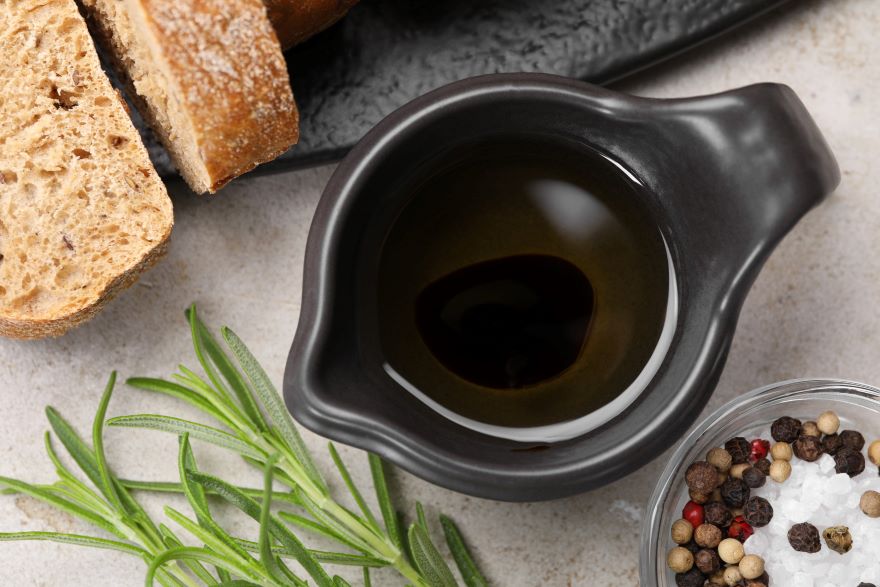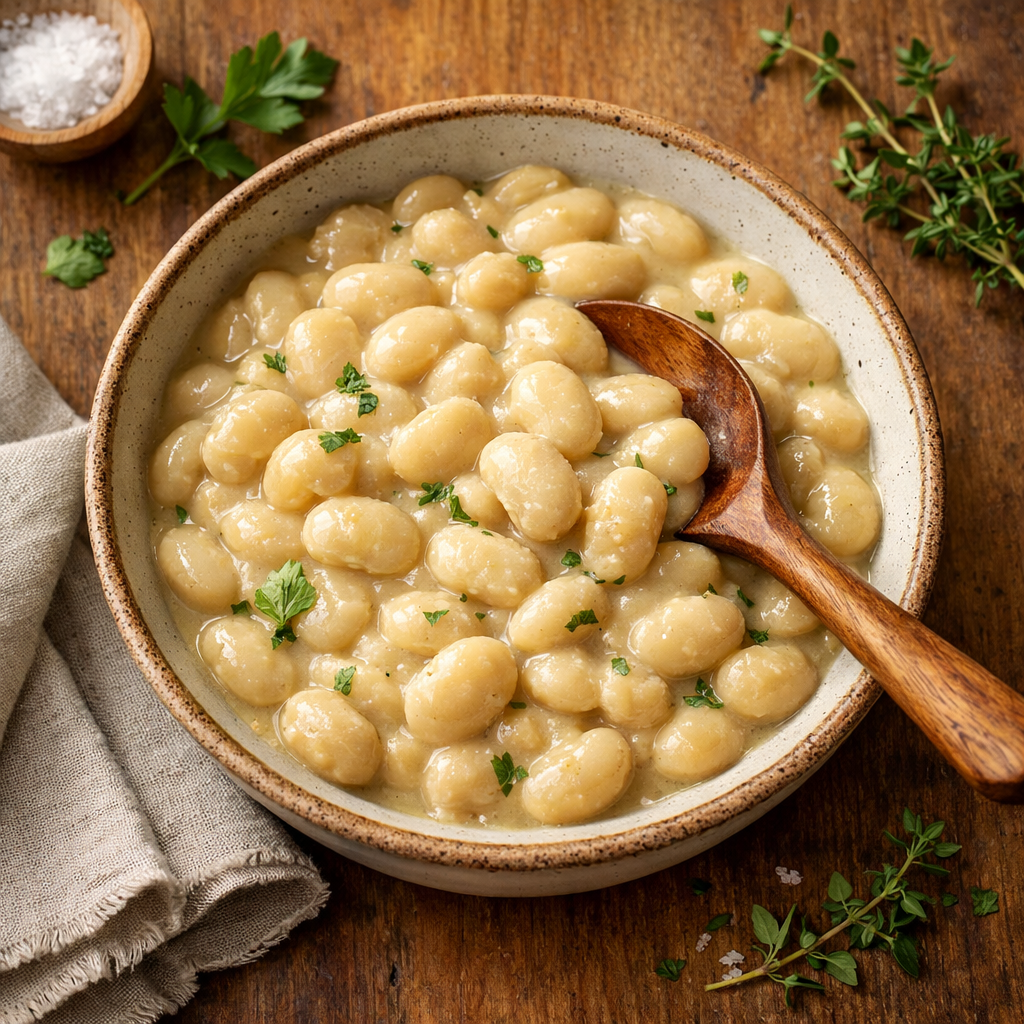Balsamic vinegar is a popular ingredient in many cuisines, known for its rich flavor and versatility in various dishes. One question that often arises when considering the nutritional profile of this delicious vinegar is its carbohydrate content. As a vinegar, it’s generally lower in carbs compared to other condiments, but it still contains some carbohydrates that can impact your diet.
Derived from the slow fermentation of cooked grape must, balsamic vinegar gets its distinct taste from the aging process, which can take years to develop. While this flavorsome vinegar can enhance many recipes, it’s essential to understand its nutritional content, particularly for those monitoring their carbohydrate intake. The carb content in balsamic vinegar primarily comes from sugars, and it can vary depending on the type and quality of the vinegar used.
Key Takeaways
- Balsamic vinegar contains carbohydrates, primarily from sugars, which can impact your diet.
- Knowing the nutritional profile of balsamic vinegar helps make informed decisions about its use.
- Incorporating balsamic vinegar into recipes can provide flavor without excessive carbs when used in moderation.
What is Balsamic Vinegar
Balsamic vinegar is a type of vinegar that has its origins in the Modena region of Italy. It is made from the concentrated juice of grapes, typically white Trebbiano grapes, and has a unique, sweet, and tangy flavor. Balsamic vinegar undergoes a fermentation process, which results in its distinct taste and dark color.
I would like to point out that there are actually two types of balsamic vinegar: traditional and commercial.
Traditional balsamic vinegar is made through a slow fermentation process, allowing the juice to concentrate and develop its characteristic flavor. The aging process can take years, even decades, and it is typically more expensive than commercial balsamic vinegar.
Commercial balsamic vinegar is different from traditional balsamic since it is made using a faster method that employs certain additives such as caramel, thickeners, and sometimes even artificial flavors. This helps mimic the taste and color of traditional balsamic vinegar, but at a more affordable price point.
In my experience, balsamic vinegar can be used in a variety of ways. It is versatile and can add a unique depth of flavor to salads, marinades, and even desserts. Furthermore, balsamic vinegar contains some important nutrients like calcium and phosphorus, and it has a relatively low calorie count for a flavorful condiment, making it a popular choice in many cuisines around the world.
The Nutritional Profile of Balsamic Vinegar
When I consider balsamic vinegar, I find it to be a versatile condiment with a distinct flavor profile. By exploring its nutritional content, one can easily understand the benefits of incorporating it into various dishes.
According to data from USDA, the nutritional profile of balsamic vinegar per 100 grams is as follows:
- Calories: 88
- Fat: 0 grams
- Protein: 0.49 grams
- Carbohydrates: 17.03 grams, of which 15 grams is sugar
- Water: 81.36%
As we can see, balsamic vinegar is low in calories and fat, making it an ideal choice for those looking to add flavor without adding excessive calories or unhealthy fats to their dishes. The majority of its caloric content comes from carbohydrates.
Considering serving size, a typical serving of balsamic vinegar contains:
- Sodium: 58.7 mg
- Potassium: 285.6 mg
These nutritional facts show that balsamic vinegar provides a moderate amount of sodium and potassium. While it doesn’t provide a significant source of vitamins and minerals, it does contribute to the overall taste and flavor of the dishes in which it is used.
In terms of glycemic index, balsamic vinegar has a GI value of 50. This number puts it in the category of low-to-moderate GI foods. Therefore, it should have a relatively moderate impact on blood sugar levels, making it a suitable option for those trying to manage their blood sugar or maintain a well-balanced diet.
In conclusion, balsamic vinegar offers a nutritionally sound profile with limited calories and fat content. Incorporating it into my meals allows me to add a rich and nuanced flavor without adding excessive calories or unhealthy ingredients.
Unpacking Carbs in Balsamic Vinegar
I find it important to understand the nutritional value of any ingredient, including balsamic vinegar. One of the most common questions I receive is about the carbohydrate content in balsamic vinegar. Carbs are a significant concern for many people, especially for those on low-carb diets like keto.
Balsamic vinegar contains a higher amount of carbs compared to other types of vinegar. Generally, it has around 2 grams of carbs per tablespoon, with some variations depending on the brand and quality. It is derived from grape must, which is high in natural sugars. The sugars in the grape must undergo fermentation and aging processes, eventually giving the vinegar its distinct sweet and tangy profile.
Despite its relatively higher carb content, balsamic vinegar is still suitable for many diets. The carbs in balsamic vinegar are mostly from sugar, but it doesn’t contain significant amounts of fiber. However, I suggest using it in moderation when incorporating it into your meals. A little goes a long way in terms of flavor, and keeping the portion size small can help manage the carbohydrate intake.
While balsamic vinegar is versatile, it might not be the optimal choice for all diets, especially those strictly limiting carbs. A good alternative would be to use other vinegar varieties such as white or red wine vinegar, which have negligible amounts of carbohydrates. Apple cider vinegar, which often contains less than 1 gram of carbs per tablespoon, can also be a more keto-friendly option.
In my experience, selecting high-quality balsamic vinegar with no added sugars is crucial not only for taste but also for maintaining a healthy diet. Enjoy balsamic vinegar’s unique flavor without compromising your dietary goals by being mindful of carb content and making wise choices.
Health Benefits of Including Balsamic Vinegar
I’ve discovered that balsamic vinegar offers various health benefits, making it a great addition to any diet. Acetic acid in balsamic vinegar has positive effects like improved digestion and reduced blood sugar spikes.
One of the key benefits I found is that balsamic vinegar can help manage diabetes. Several types of vinegar, including balsamic, are thought to limit spikes in blood glucose levels, promoting better diabetes management source.
Besides managing blood sugar, balsamic vinegar has some skin health benefits. It contains antimicrobial compounds and acetic acid, which can help improve skin health.
Balsamic vinegar is a source of essential minerals like calcium, iron, magnesium, phosphorus, potassium, and sodium. These minerals are necessary for maintaining various bodily functions and overall health.
Balsamic vinegar can help alleviate heartburn by improving digestion. Acetic acid in balsamic vinegar promotes digestion, which may, in turn, reduce heartburn symptoms.
In summary, I believe that including balsamic vinegar in your diet can provide several health benefits. Balsamic vinegar is versatile and beneficial, managing diabetes, improving skin health, providing essential minerals, and reducing heartburn.
How Balsamic Vinegar Impacts Blood Glucose Levels
As someone who pays close attention to my diet, I’m always on the lookout for food options that can help me manage my blood glucose levels, particularly for those of us with concerns about blood sugar spikes or type 2 diabetes.
Balsamic vinegar has often been recommended as a healthier alternative to other condiments. One reason for this is that it is thought to limit spikes in blood glucose levels when consumed in moderation before meals. Research shows that individuals with insulin resistance experienced a blood sugar plateau lasting up to five hours after taking balsamic vinegar.
This effect may be attributed to several factors. Balsamic vinegar’s acidity slows down the digestion process, allowing the body to absorb and break down carbohydrates more slowly. This can, in turn, help prevent sharp increases in blood sugar levels.
Furthermore, studies have pointed out that vinegar intake has a positive impact on glucose metabolism, which can help those with type 2 diabetes manage their condition better. Balsamic vinegar, in particular, has been shown to improve high fat-induced beta cell dysfunction, which can contribute to more stable blood glucose levels.
To maintain healthy blood glucose levels while still enjoying the flavor balsamic vinegar brings to my meals, it’s important to consume it in moderation. A small amount can go a long way in improving the taste of the dishes I prepare, without having a negative impact on my blood sugar levels.
Crafting Tasty Recipes with Balsamic Vinegar
I have discovered that balsamic vinegar is not only a versatile ingredient but also a delightful means to enhance the flavor of various dishes. Its sweet and tangy taste can elevate salads, sauces, and even main courses.
Incorporating balsamic vinegar into salad dressings has truly transformed my salads. I like to make a spicy balsamic vinaigrette that is both sweet and hot, perfect for adding a delicious twist to any salad. I’ve also tried a light balsamic vinaigrette, which has fewer calories but is just as enjoyable.
Balsamic vinegar can also be used in various sauces. For instance, a balsamic glaze can be used as an impressive addition to dishes like Balsamic-Glazed Pork Tenderloin, which utilizes the tangy glaze to its full potential. The acidity and sweetness of this glaze complement the tender, savory pork to perfection.
Balsamic vinegar’s potential goes beyond salad dressings and sauces. I’ve found that it can also add an unforgettable flavor to main dishes and sides when used as a marinade. The rich depth created by the vinegar seems to give the dish an irresistible appeal.
Overall, I am consistently impressed by the delicious recipes that can be crafted using balsamic vinegar. It has proven to be an exceptional ingredient in my kitchen, and I look forward to discovering even more tasty creations in the future.
Balsamic in Your Diet: Moderation is Key
When incorporating balsamic vinegar into my diet, I make sure to consume it in moderation. While being a flavorful addition to many dishes, it is essential to be mindful of its carbohydrate content, especially when following a low-carb or keto diet.
Balsamic vinegar contains carbohydrates in varying amounts, depending on its type and quality. A single tablespoon of balsamic vinegar may have anywhere from 2 grams to 10 grams of net carbs. As a comparison, other types of vinegar, such as white and red wine vinegar, typically have little to no carbs.
To keep my daily carb intake in check while enjoying the benefits of balsamic vinegar, I opt for small amounts and pay attention to the quality of the product. Traditional balsamic vinegar usually has lower carb content than mass-produced alternatives, which are often high in carbs.
Introducing balsamic vinegar into my diet has several health benefits, such as providing nutrients like calcium and phosphorus while being low in calories and fat. I make sure to choose high-quality balsamic vinegar and avoid glazes or dressings with added sugars and artificial additives.
In conclusion, balsamic vinegar can be an excellent choice for a flavorful, nutritious condiment when consumed in moderation. By keeping its carbohydrate content in mind and selecting high-quality products, I can safely include balsamic vinegar in my low-carb or keto diet while reaping its health benefits.
Conclusion
In my research, I found that balsamic vinegar is a flavorful and versatile ingredient that can enhance many dishes. It contains a small amount of carbs, with approximately 2 to 3 grams per tablespoon. This makes it a relatively low-carb option compared to many other sauces and condiments.
Besides its carb content, balsamic vinegar offers several health benefits. It is low in calories, making it a great choice for adding flavor without adding fat or sodium. Balsamic vinegar also contains essential nutrients such as calcium and phosphorus, as mentioned by WebMD. Additionally, the polyphenols in balsamic vinegar may help improve cardiovascular health.
I believe that when used in moderation, balsamic vinegar can be a delicious and healthy addition to various recipes. It is important, however, to be mindful of portion sizes to avoid consuming excessive carbs, particularly if you are following a low-carb or ketogenic diet. Overall, incorporating balsamic vinegar into your diet can provide both pleasing flavors and nutritional benefits.
Frequently Asked Questions
What is the carb content in balsamic vinegar per tablespoon?
The carb content in balsamic vinegar can vary slightly between brands, but typically, one tablespoon of balsamic vinegar contains about 2 grams of carbs.
Are there sugar-free balsamic vinegar options?
While there may not be completely sugar-free options, some brands offer balsamic vinegar with no added sugar. These tend to have approximately 3 grams of net carbs per tablespoon. It’s important to read labels carefully and choose a brand that suits your dietary needs.
What’s the best low-carb alternative to balsamic vinegar?
A good low-carb alternative to balsamic vinegar can be apple cider vinegar, which has less than 1 gram of carbs per tablespoon. While it lacks the distinct sweetness of balsamic vinegar, it can still add tangy flavor to your recipes.
Which vinegar has the lowest carb content?
White and red wine vinegar have the lowest carb content, with virtually no carbs at all. They can be a good option for those looking to minimize their carb intake, and they can be used in many recipes that call for vinegar.
How many net carbs are in balsamic dressing?
The net carbs in balsamic dressing can vary greatly depending on the brand and specific recipe used. Some brands may contain over 10 grams of sugar and a high carbohydrate content, while others may be lower in carbs. To minimize your carb intake, make your own balsamic dressing at home, so you can control the ingredients and carb count.

*We may earn a commission for purchases made using our links. Please see our disclosure to learn more.



